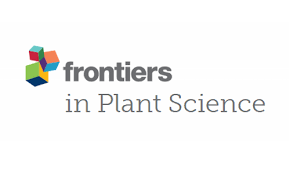View Item
- xmlui.general.dspace_homeCentros e Institutos de InvestigaciónCIAP. Centro de Investigaciones AgropecuariasInstituto de Fisiología y Recursos Genéticos VegetalesArtículos científicosxmlui.ArtifactBrowser.ItemViewer.trail
- DSpace Home
- Centros e Institutos de Investigación
- CIAP. Centro de Investigaciones Agropecuarias
- Instituto de Fisiología y Recursos Genéticos Vegetales
- Artículos científicos
- View Item
Polyamines and Legumes: Joint Stories of Stress, Nitrogen Fixation and Environment
Abstract
Polyamines (PAs) are natural aliphatic amines involved in many physiological processes in almost all living organisms, including responses to abiotic stresses and microbial interactions. On other hand, the family Leguminosae constitutes an economically and ecologically key botanical group for humans, being also regarded as the most important protein source for livestock. This review presents the profuse evidence that relates changes in PAs levels during
[ver mas...]
Polyamines (PAs) are natural aliphatic amines involved in many physiological processes in almost all living organisms, including responses to abiotic stresses and microbial interactions. On other hand, the family Leguminosae constitutes an economically and ecologically key botanical group for humans, being also regarded as the most important protein source for livestock. This review presents the profuse evidence that relates changes in PAs levels during responses to biotic and abiotic stresses in model and cultivable species within Leguminosae and examines the unreviewed information regarding their potential roles in the functioning of symbiotic
interactions with nitrogen-fixing bacteria and arbuscular mycorrhizae in this family. As linking plant physiological behavior with “big data” available in “omics” is an essential step to improve
our understanding of legumes responses to global change, we also examined integrative MultiOmics approaches available to decrypt the interface legumes-PAs-abiotic and biotic stress interactions. These approaches are expected to accelerate the identification of stress tolerant
phenotypes and the design of new biotechnological strategies to increase their yield and adaptation to marginal environments, making better use of available plant genetic resources.
[Cerrar]

Author
Menéndez, Ana Bernardina;
Calzadilla, Pablo Ignacio;
Sansberro, Pedro Alfonso;
Espasandin, Fabiana Daniela;
Gázquez, Ayelén;
Bordenave, Cesar Daniel;
Maiale, Santiago Javier;
Rodríguez, Andrés Alberto;
Maguire, Vanina Giselle;
Campestre, Maria Paula;
Garriz, Andrés;
Rossi, Franco Rubén;
Romero, Fernando Matias;
Solmi, Leandro;
Salloum, María Soraya;
Monteoliva, Mariela Ines;
Debat, Humberto Julio;
Ruiz, Oscar Adolfo;
Fuente
Frontiers in Plant Science 10 : 1415. ( November 2019)
Date
2019-11-04
Editorial
Frontiers Media
ISSN
1664-462X (online)
Formato
pdf
Tipo de documento
artículo
Palabras Claves
Derechos de acceso
Abierto
 Excepto donde se diga explicitamente, este item se publica bajo la siguiente descripción: Creative Commons Attribution-NonCommercial-ShareAlike 2.5 Unported (CC BY-NC-SA 2.5)
Excepto donde se diga explicitamente, este item se publica bajo la siguiente descripción: Creative Commons Attribution-NonCommercial-ShareAlike 2.5 Unported (CC BY-NC-SA 2.5)


